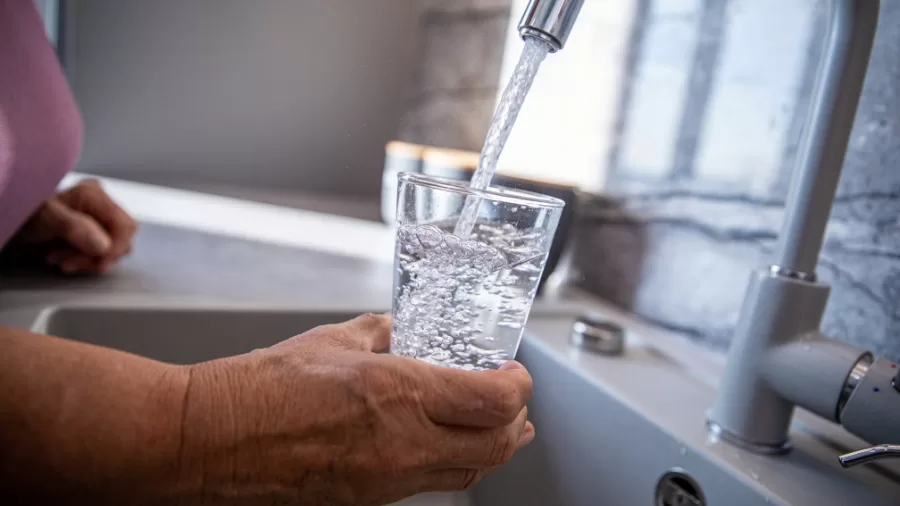Resources
Beyond the Tap: Inside the Global Water Industry’s Push for a Sustainable Future

- Climate change, pollution, and ageing infrastructure are all important concerns for the water business, putting global water resources at risk.
- Technological breakthroughs, ecological practices, and government restrictions are pushing innovation in water management to maintain a safe and dependable water supply.
- Community engagement, robust infrastructure, and individual conservation initiatives are critical to achieving a sustainable, water-secure future globally.
The water business is an essential part of modern living, ensuring the supply of clean water, managing wastewater treatment, developing desalination technologies, and practicing responsible resource management. Water is collected from natural reservoirs such as rivers, lakes, and underground aquifers and treated to fulfil the different demands of households, businesses, and industries. Meanwhile, wastewater is purified before being returned to the environment, so promoting a balanced and sustainable water cycle. Around the world, governments, public utilities, and private corporations collaborate to ensure a consistent and safe water supply.
Challenges in the Water Industry
Despite its critical function, the water industry faces enormous difficulties that jeopardise the sustainability of world water resources. Climate change is one of the most serious challenges, with erratic precipitation patterns, prolonged droughts, and severe weather events straining water systems around the world. Rising temperatures are causing water scarcity in many countries, notably in drought-prone areas. Rapid population expansion and urbanisation exacerbate the problem since expanding cities place more strain on already overburdened infrastructure. Pollution is a major concern, with toxins from agricultural runoff, industrial discharges, and untreated wastewater affecting water quality. In recent years, there has been increased worry over the prevalence of persistent chemicals in drinking water, such as PFAS (per- and polyfluoroalkyl compounds), prompting requests for more effective treatment procedures. Another difficulty is ageing infrastructure, particularly in wealthy countries where old pipelines and distribution networks are inefficient and prone to leaks. Significant volumes of water are lost every day around the world as a result of infrastructure degradation, emphasising the critical need for investment and renovation.
Technological Innovations in Sustainable Water Management
The water sector is actively researching technical advances to overcome these difficulties. Digitalisation and the development of smart water networks are changing the way utilities monitor and manage their water systems, with sensors and IoT technology delivering real-time data on water usage and pipeline issues. This technology allows businesses to discover leaks earlier, estimate demand more accurately, and improve overall service efficiency, thereby conserving water and lowering operational expenses. Desalination technology has also advanced with innovative, energy-efficient techniques such as reverse osmosis and nanotechnology, lowering environmental impact and making large-scale desalination possible even in water-scarce areas.
Wastewater recycling is increasingly becoming an important water-saving strategy. Treated wastewater, sometimes known as “reclaimed water,” is increasingly being reused for non-potable applications such as irrigation and industrial activities, or it can be treated further to satisfy drinking water standards. Several regions have successfully developed wastewater recycling schemes that provide a significant portion of their water demands from recycled sources. Green infrastructure provides another option for sustainable water management; urban rain gardens, permeable pavements, and built wetlands manage stormwater, reduce flooding, and support natural water cycles in highly populated regions. Many water treatment facilities are also using renewable energy sources, such as solar, wind, and hydropower, to reduce carbon emissions and operating costs.
Government Regulation and Its Impact on the Water Industry
Government laws play an important role in setting water quality standards, enforcing conservation practices, and shaping industrial policies. Stricter pollution restrictions have pushed water firms to use modern treatment methods and meet public health standards. To encourage conservation and support infrastructure improvements, some communities have implemented tiered pricing structures in which costs rise with water usage. Multi-sector initiatives involving government, non-profit organisations, and private companies are also promoting responsible water use and advancing global sustainability goals, such as the United Nations’ Sustainable Development Goal 6, which aims to provide safe and accessible water and sanitation to all by 2030.
Community Engagement and Public Education on Water Conservation
Community engagement and education are essential for a sustainable water future. Local involvement in water management decisions enhances awareness and promotes responsible practices, whereas public education initiatives urge communities to play an active role in conservation and pollution avoidance. Promoting the use of water-efficient technologies, such as low-flow fixtures and smart sprinklers, can help to minimise water use in homes and businesses. Integrated Water Resource Management (IWRM) is a comprehensive approach that encourages the engagement of stakeholders, including local communities, government agencies, businesses, and non-governmental organizations, in balancing water needs with ecological health. This technique has been successful in areas where cooperation is required to efficiently manage shared water resources.
Developing Resilient Infrastructure for a Sustainable Water Future
To address the needs of a changing environment and limited resources, the water industry requires resilient infrastructure. Building resilience includes strengthening current systems, establishing alternate water sources, and adopting climate-resistant materials in treatment facilities. Circular economy principles are also gaining traction in water management, where water resources are constantly recycled and repurposed to reduce waste and promote sustainable practices. Recycling wastewater, extracting valuable byproducts from treatment procedures, and conserving resources all help to create a circular water economy that attempts to maintain long-term water supply reliability.
Individual and Business Contributions to Water Sustainability
Although the water industry plays an important role, individuals and businesses can also help to promote sustainable water practices. Simple steps such as correcting leaks, utilising water-efficient appliances, and minimising water consumption contribute to conservation efforts. Many businesses are also implementing Environmental, Social, and Governance (ESG) principles, with water management being a significant component. Some businesses are attempting to become “water positive,” refilling more water than they consume by funding projects that restore wetlands, enhance local water access, and encourage sustainable agriculture methods.
A Path to a Sustainable Water Industry
The water business is at a crossroads, balancing rising water demand with the critical requirement for sustainability. While creating a sustainable, water-secure future will be difficult, the opportunity for transformation is enormous. The sector may work towards a more resilient water system in the future by implementing technological advancements, progressive regulations, and increasing community involvement. Collaboration among governments, corporations, communities, and individuals will be critical to ensuring that clean, accessible, and sustainable water is available for future generations.




















































